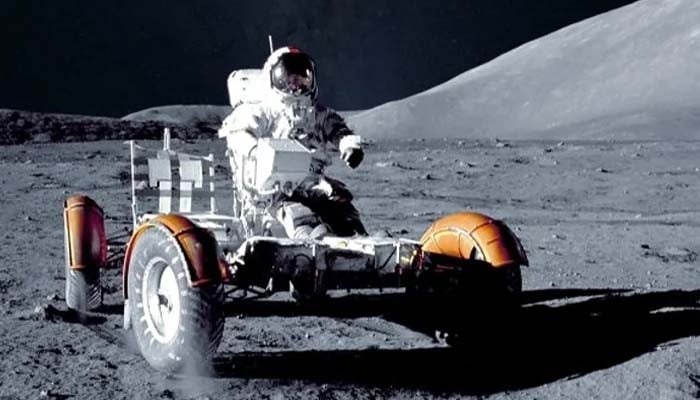Lunar rover: Enter Suparco's contest to name Pakistan's first Moon mission
Win cash prize of Rs100,000 and make history by giving Pakistan's first-ever moon vehicle a unique identity
February 18, 2025

In yet another stellar leap for Pakistan’s cosmic ambitions, the country’s first-ever lunar rover is set to journey to the Moon as part of China’s Chang’E 8 mission in 2028 — a milestone underscoring the nation's growing role in international space exploration.
This development marks a historic collaboration, which will not only advance research on the Moon but also position Pakistan among the few nations contributing to space exploration through homegrown technological innovation.
To celebrate this achievement and engage the nation, the Pakistan Space and Upper Atmosphere Research Commission (SUPARCO) has announced a nationwide contest, with a cash prize of Rs100,000/-, inviting the public to propose a name for the lunar rover.
The Moon, which is Earth’s natural satellite, has fascinated humanity for centuries, serving as a stepping stone for deeper space exploration. It holds valuable resources, such as water ice and rare minerals, which could support future space missions.
A lunar rover plays a crucial role in exploring the Moon’s surface, navigating harsh terrain, conducting scientific experiments, and transmitting critical data back to Earth.
By studying the Moon, scientists can gain insights into Earth’s history, planetary evolution, and the potential for sustaining life beyond our planet.
Under the theme “Name Pakistan’s Lunar Rover,” the contest encourages public participation in the country’s space journey.
It is open to students, space enthusiasts, and the general public across Pakistan. Participants can submit a unique and meaningful name and a brief explanation of their choice. The winner will receive national recognition.
Pakistan’s entry into lunar exploration is a significant milestone, and this contest allows every citizen to be a part of this historic journey.
Pakistan first home-made observation satellite
Last month, Pakistan launched its first home-made observation satellite from the Jiuquan Satellite Launch Centre in northern China.
The PRSC-EO1 satellite will boost Pakistan's ability to monitor and manage natural resources, respond to disasters, and improve urban planning and agricultural development, the Suparco said in a statement.
This type of satellite uses electro-optical sensors to collect data and images of the Earth's surface by detecting and measuring reflected sunlight or emitted radiation.
China's Long March-2D carrier rocket also launched two other satellites, Tianlu-1 and Blue Carbon 1, into orbit along with the PRSC EO1, according to China Aerospace Science and Technology Corporation.
Currently valued at $5 billion, the earth observation satellite market is among the fastest growing sectors within the commercial space industry, with Novaspace predicting it to exceed $8 billion by 2033.
Countries including the United States, China and India have been building their own government and private satellite constellations to map the Earth. Indian startup Pixxel this month launched the country's first privately built satellite constellation.












